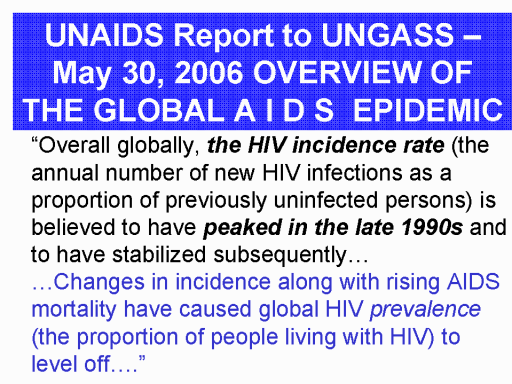| front |1 |2 |3 |4 |5 |6 |7 |8 |9 |10 |11 |12 |13 |14 |15 |16 |17 |18 |19 |20 |21 |22 |23 |24 |25 |26 |27 |28 |29 |30 |31 |32 |33 |review |
 |
A couple of months after the Shelton et al
article in the Lancet about whether the AIDS Pandemic had
peaked or not, UNAIDS was literally forced to admit that the
pandemic had peaked! However, HIV epidemics in different
regions and populations mostly peaked during the 1980s and
1990s – UNAIDS is just wakening up to this fact!
My analysis of global HIV incidence and
prevalence trends indicate that HIV incidence of new
infections and prevalence of persons living with HIV
infection peaked at different times in different HIV
epidemics in different global regions – but all, including
SSA peaked by the late 1990s
The reasons for these differences include: the time
HIV was introduced into a population or area; the time
epidemic HIV transmission may have started; and the primary
mode of HIV transmission in any specific epidemic.
In most developed countries annual HIV
incidence in MSM and IDU epidemics peaked by the
mid-to-late 1980s; HIV prevalence peaked by
the late 1980s to the early 1990s; and annual
AIDS cases and deaths peaked by the mid-1990s. In
SSA, HIV incidence peaked by the mid-1990s and
HIV prevalence peaked by the year 2000.
|